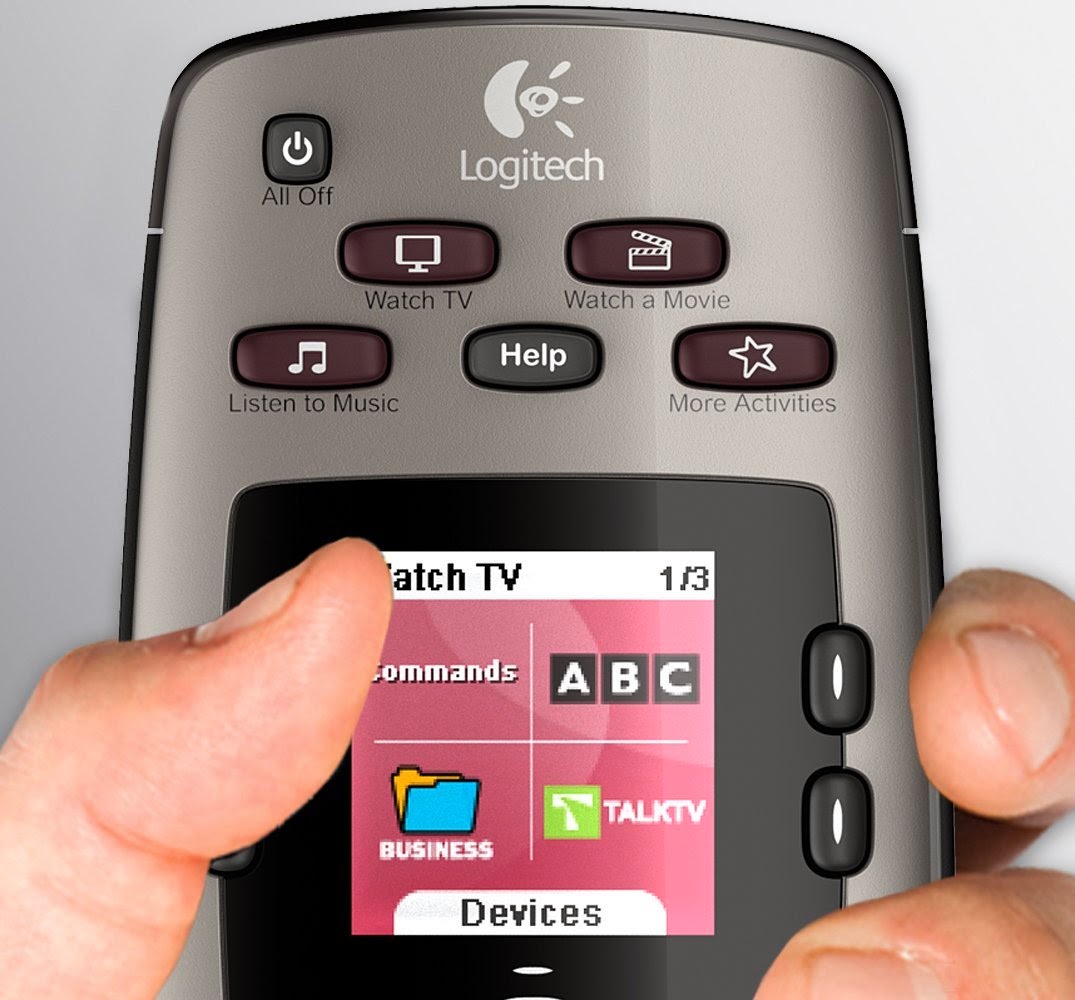So I decided to finally do something about the clutter. But where does one start? Organization? You bet! I sat down and created a short-list of what features were important for me to get based on my previous experiences with poorly-designed universal remote controls. The "must have" features I came up with are:
- Learning mode for atypical control codes (use the existing remote to train the new remote)
- Long battery life (possibly rechargeable)
- User friendly and intuitive (MUST have an ultra-high spousal-approval factor [aka SAF])
- Small, preferably controllable from one hand
- Does not forget its programming when quickly changing batteries
- Capable of controlling both IR and RF gear
- Easy to program
- Easy to access repetitive functions
- Does not require any device to be network connected
- Best bang for the buck (read under $300, preferably under $100)
The problem with remote controls is that there is no standard. Unlike HDMI, USB, and other interconnects, remote controls use a variety of digital command sequences based on a slurry of methods prepared by a variety of engineers from a plethora of manufacturers, none of which are involved directly in the industry to which the remote is used. For example, one manufacturer creates a remote control device that is used on a toy car and this same electronic device is used on a television or personal media streamer without conflict by just tweaking a design parameter. Convenient for equipment designers, yes, for consumers, not so much.
And there seems to be no relief in sight...or is there. Logitech, a company who first entered the consumer market with its computer mice, has grown its product family in many ways, each with its successes and failures. But this market seems to need someone to take the reigns and get a hold of simplifying complicated issues and they have done a decent job. After evaluating the higher-end offerings, I decided to spring for their more budget-based product, the Harmony 650 available for well under $100.
This remote offers PC-based programming and an online tool that allows you to research which devices it can control, something you really need to investigate before buying anything. And with all of my gear on their list, I was at least confident that training it from the manufacturer's remote would not be necessary (although it can do this too).
I was frustrated after the first software installation and control setup since it frankly did not program the remote as I had instructed it to do, but after removing, rebooting, and re-installing the web app, all went well. (BTW, to reset this remote, remove one battery, hold down the "All Off" button, and reinsert the battery. This will enter SAFE MODE on the remote allowing it to wipe the current training and relearn everything.)
What I really liked about this remote is the four one-button tasks. Say you get up early one morning and have not drank your favorite morning beverage reviving your weary eyelids and encouraging your sluggish body to move. The Harmony 650 has a button labeled "Listen to Music" and once properly programmed it will allow you to do just that with the push of that button. What a concept! Now, a word of caution, you must keep the remote pointed at the gear for a while so that all of the commands can be executed at the time required. For example, my OPPO BDP-105 takes its time getting to the HOME screen so the remote control understands this and pauses the appropriate amount of time before telling it which source to select. Brilliant! High marks for the Logitech's attention to the SAF.
Full-Color Logitech Harmony 650 Display and Four Task Buttons
However, and this is a big however, this remote forgets its programming functions. Yes, you heard me correct, with the next day's use, this remote control forgot how to turn everything on. While it did recall how to switch individual devices on/off, doing so from one of the four-button tasks did not reliably work. Use of the HELP button did resolve the issue for the moment, but after another all off/on cycle, back to the same old forgetful behavior and I have to retrain it...again, and again, and again. I don't know about you, but having to reprogram a remote almost every time you use it is not why I buy a universal remote control.
On the rare occasion that is does remember to turn everything on properly, accessing a device to perform another function (like changing the source of the OPPO) forgets the mapping to the volume control on the preamp (duh!). So going back-and-forth between devices becomes essential but again for a remote of this level it should not be unnecessary.
So, the bottom line is this: the Logitech 650 has the right idea but the sample I received did not work as advertised. For this reason, I am going to give these folks the benefit of a doubt that for some unknown reason I received a lemon (lemons happen). However, for this same reason I cannot give this remote a glowing review.
Until Logitech steps up to the higher-quality-control plate, I would look elsewhere for an under $100 universal remote control.
Yours for higher fidelity,
Philip Rastocny
I do not use ads in this blog to help support my efforts. If you like what you are reading, please remember to reciprocate, My newest title is called Where, oh Where did the Star of Bethlehem Go? It’s an astronomer’s look at what this celestial object may have been, who the "Wise Men" were, and where they came from. Written in an investigative journalism style, it targets one star that has never been considered before and builds a solid case for its candidacy.
Copyright © 2015 by Philip Rastocny. All rights reserved.






